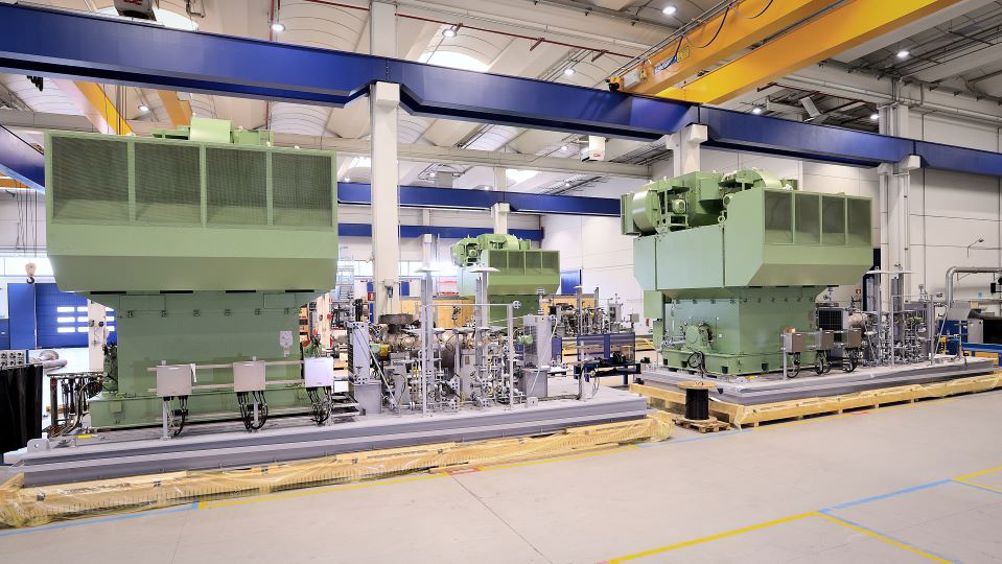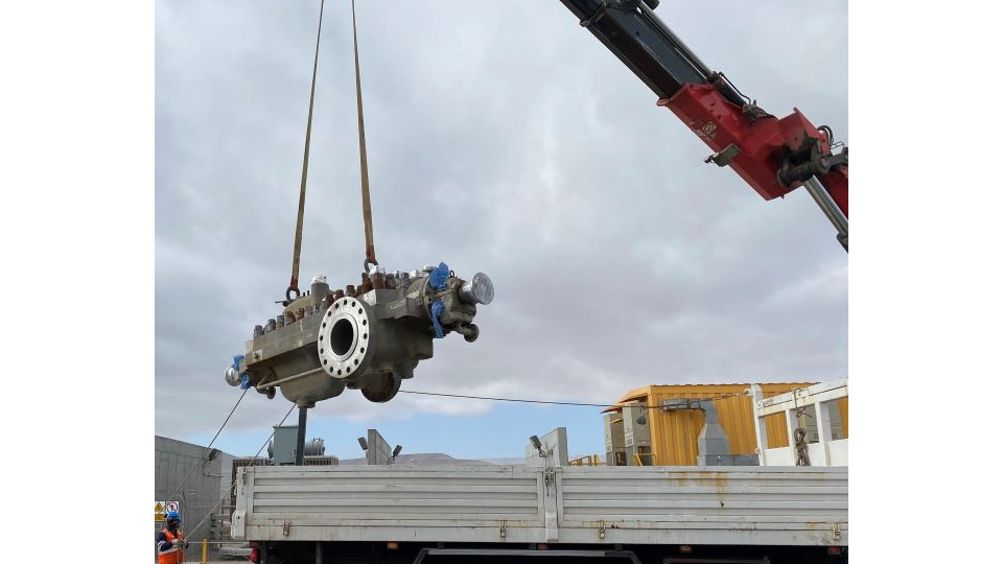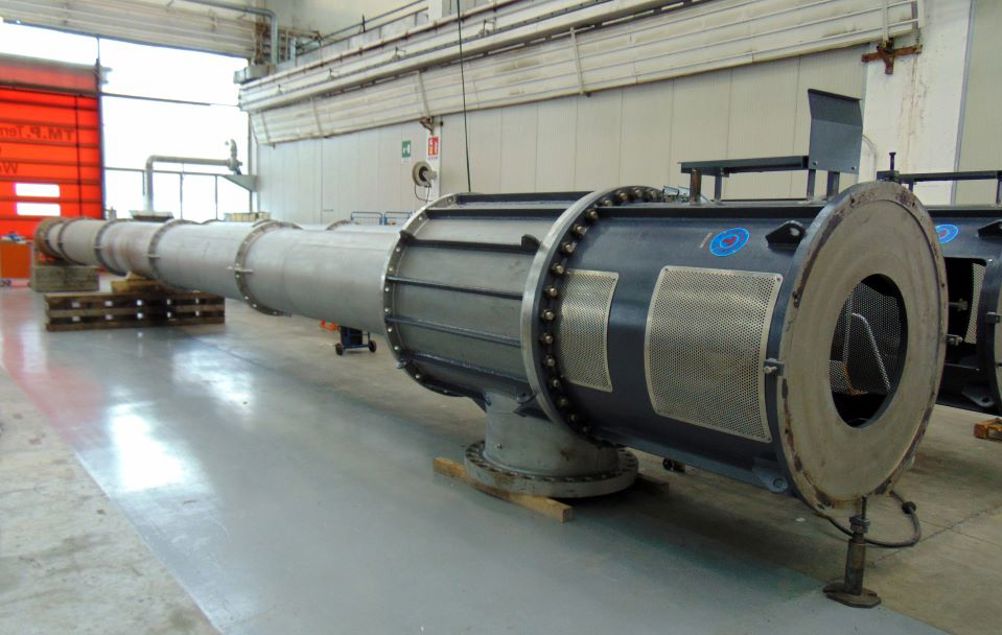In today’s rapidly evolving industrial landscape, reliable and efficient flow control solutions are essential for meeting global operational challenges. Trillium Flow Technologies tackles these needs across the water, mining, energy, and oil and gas sectors by combining cutting-edge technology with deep industry expertise.
Oil & gas
Trillium Flow Technologies helps oil and gas operators address rising energy costs while advancing sustainable operations. One recent project illustrates this capability, where Trillium supplied BB5 pump units for a major onshore oil facility expansion. The company constructed API 610-compliant, double-casing, radially split, multistage between-bearing pumps in superduplex stainless steel. Operating at capacities exceeding 1,000 m³/h and 1,700 m with 8 MW motors, these pumps inject aquifer water into offshore wells. They were manufactured at Trillium’s Nova Milanese factory in Italy, which maintains rigorous quality standards through comprehensive testing procedures. Since its establishment in 2016, this purpose-built site has demonstrated the company’s commitment to engineering excellence.

Trillium applies the same engineering expertise to complex pipeline applications, including the recent development of pumps managing 5,000 km of pipeline infrastructure. The main oil line BB1 pumps had to maximize uptime and efficiency while curbing energy consumption given their remote location and power exceeding 10 MW. Trillium also engineered a solution that maximized flexibility while minimizing CAPEX to handle different flow conditions. The VS7 booster pumps featured a remote monitoring device to check insulation performance and guarantee reliability across a temperature range of -60°C to +40°C. Additionally, Trillium offered training on maintenance to ensure optimal long-term operation.
Trillium’s Roto-Jet pitot tube technology is another example of its engineering capabilities. Pioneering the technology in the 1950s to enhance efficiency for low-flow, high-head applications, the company recently replaced conventional OH6 pump units installed at a refinery, which experienced significant vibration and failure issues, with Roto-Jet pitot tube pumps, reducing operating costs while improving reliability.
Trillium supports customers throughout the oil and gas value chain with a comprehensive portfolio of pumps, valves, and services, solidifying its role as a key partner in advancing operational efficiency and sustainability.
Water

Experts predict over half the world’s population will face water stress within the next five years. Trillium supports its customers in addressing these challenges by providing specialized products and technical expertise for sustainable water management solutions.
Through its Termomeccanica Pompe brand, Trillium supplied all the high-energy, highefficiency BB1-type pump packages for a recent major water transmission project. The project comprised a desalination plant with pumping stations, water reservoirs, and a 345 km pipeline network transporting the desalted water from the coast to an altitude of 1,700 m. This installation demonstrates Trillium’s expertise in large-scale water infrastructure projects that secure water resources for growing populations.
Another 165 km water pipeline system came online recently using Trillium’s Gabbioneta Pumps brand API 610 BB3-type heavy-duty process pump packages. These systems operate reliably along the pipeline, from the coast, through a dry desert, and at altitudes of up to 3,500 m, underscoring their effectiveness in challenging geographies.
Trillium’s recent involvement in the world’s largest and latest generation desalination plant showcases its sustainability commitment. The company provided engineered pull-out type vertically suspended pumps for seawater supply and axially split horizontal pumps for potable water distribution to the plant, which produces 40 million imperial gallons per day of drinking water for more than 700,000 people. The facility’s reverse osmosis operations are powered by solar energy to reduce its carbon footprint.
Trillium has also made a significant impact on sustainability by strategically upgrading and rerating existing systems. The company achieved a 20% reduction in energy consumption at an Italian aqueduct and similar energy efficiency improvements in Middle Eastern desalination plants have substantially cut CO2 emissions.
Trillium relies on advanced computational fluid dynamics (CFD) and finite element method (FEM) analyses to optimize efficiency and mechanical design, driving these sustainability gains. As the world faces mounting water security challenges, Trillium continues to innovate to help shape a more water-secure, energy efficient future.

Mining
Trillium demonstrates its mining and mineral processing expertise by delivering innovative pump solutions and comprehensive customer partnerships.
The company focuses on maximizing performance, reliability, and durability to meet the critical needs of an industry where equipment failure can lead to substantial operational losses.
Trillium’s engineering excellence shines through specialized solutions that address the unique challenges of mining applications.
In a recent copper leaching project, Trillium’s engineering team developed titanium-based Floway vertical turbine pumps to handle highly acidic solutions with elevated chloride levels. This initiative reflects the company’s commitment to thorough research and development, careful material selection, and rigorous testing to ensure optimal performance in demanding conditions.
Beyond product offerings, Trillium delivers complete lifecycle support through collaborative partnerships with operators. At a copper mine concentrator plant, premature pump wear caused significant disruptions. Trillium resolved these issues by implementing Floway VTSP vertical turbine solids pumps, extending wear life from 300 to over 1,000 hours and tripling the mean time between failures.

Energy efficiency
Trillium’s R&D department has developed Hydraulic Power Recovery Turbine (HPRT) solutions in response to global demands for greater energy efficiency. These solutions transform centrifugal pumps to operate in turbine mode to capture and repurpose residual energy from pressurized flow outlets, delivering an economical and more sustainable alternative to traditional methods that waste pressure energy through throttling valves.
HPRTs are especially relevant in water supply systems and processing industries that handle high-pressure flows. These systems can feed recovered energy back into public power grids through AC generators or reduce power consumption in other process operations via direct driver connection. Trillium’s research has produced advancements in HPRT design by using CFD tools to set precise criteria for converting API 610 centrifugal pumps into efficient HPRTs.
The team focused on two configurations: a reverse-running multistage BB4-type pump and a single-stage, single-suction OH2-type pump. Their research confirmed that numerical simulation outperforms traditional theoretical methods when predicting HPRT performance.
It also highlighted the importance of selecting the right balancing line for the BB4-type pump and using CFD to optimize the geometry for the OH2-type pump.
HPRT technology benefits energy-intensive industries like industrial, oil and gas, and petrochemicals by improving efficiency, profitability, and sustainability. Trillium’s HPRT innovation reflects the company’s commitment to “Performance, Engineered” solutions that meet industry needs.
About the author
This article was provided by Trillium Flow Technologies
This article first appeared in the January/February 2025 issue of World Pumps magazine. To read the full issue, click here.







